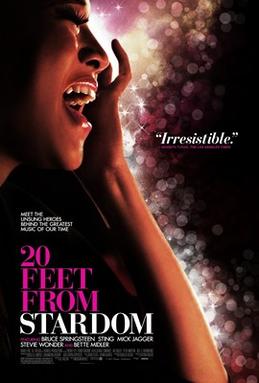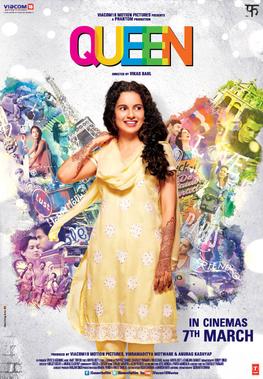 "Winner of the Academy Award for Best Documentary Feature" is a descriptor that rarely conjures up positive emotions. Oscar-winning documentaries are generally about grim subjects like war, corruption, and poverty. However, this year the Academy honored a magnificent movie about the anonymous men and women who take the stage behind world-famous singers. Brilliant performers in their own right, this is the story of the people who live their lives 20 Feet from Stardom.
"Winner of the Academy Award for Best Documentary Feature" is a descriptor that rarely conjures up positive emotions. Oscar-winning documentaries are generally about grim subjects like war, corruption, and poverty. However, this year the Academy honored a magnificent movie about the anonymous men and women who take the stage behind world-famous singers. Brilliant performers in their own right, this is the story of the people who live their lives 20 Feet from Stardom.Through interviews with singers (both lead and backup), music historians, and producers, the movie gradually unfurls the history of background singing. Beginning in the 1950s, this field grew to be dominated by African-American women, who came from the gospel tradition and were therefore adept at the call-and-response nature of backup singing. Unlike white backup singers, who they referred to as "readers" because they read the music and didn't do a lot else, these women sang their hearts out and helped to elevate the popular music of the day. With the advent of rock and roll, and musicians like David Bowie, Joe Cocker, and the Rolling Stones who wanted to "sound black," these backing vocalists were in high demand, helping to create the "wall of sound" that would define a generation of music.
Backup singers are responsible for many of the hooks that people sing along to when they think of famous songs, yet people rarely know the names of these artists. The movie highlights women like Lisa Fischer, Tata Vega, and Claudia Lennear, women who are legends in the background singing community, and yet never managed to become household names. It also presents the history of Darlene Love's struggle to transition from a backup singer to a solo artist. Exploited by music producer Phil Spector, who used her vocals to promote other people's records, it took her decades to earn the recognition she so richly deserved. And yet, her journey is a rarity, because most backup singers are unable to make the leap from the shadows to the spotlight.
Making that leap is a masterclass in human psychology. We hear from singers who released solo albums, achieved fame, and then slowly faded into obscurity because they didn't know how to play the game. Other singers confess that they prefer being background vocalists, convinced that fame would have just destroyed their lives. A point that is revisited multiple times is how you need ego to be a star - if you're a backup singer, you might not be self-involved enough to make it to the top. The collaborative nature of backup singing is a wonderful thing, and many of these people are artists who are above mercenary motives. As long as they can sing, they're happy to remain in the shadows.
20 Feet from Stardom isn't about the glitz and glamour of being a musician. It's about people who just want to sing. Being a backup singer can either be fulfilling or frustrating, and you will experience a rollercoaster of emotions as you hear these singers' stories. But once they start singing, your heart will soar. So the next time you listen to a song, pay attention to those backing vocals. There's a whole story behind those voices.


